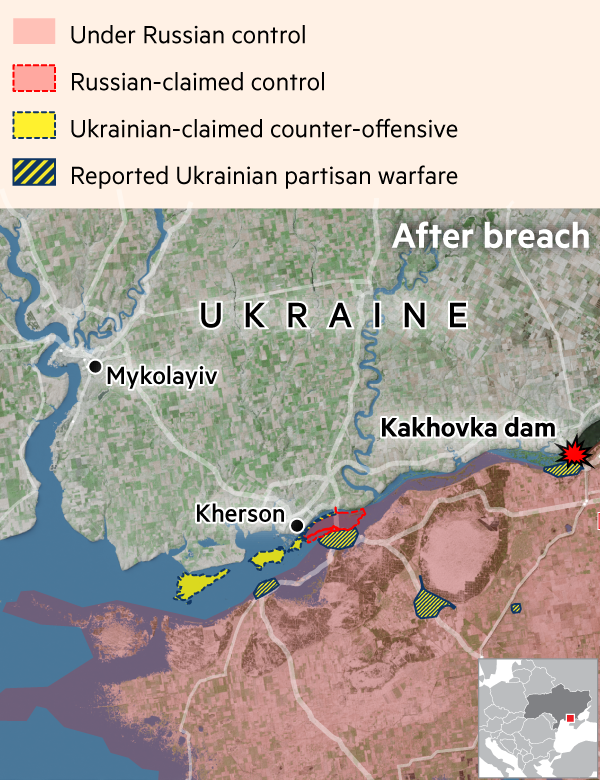Context
-
Kakhovka dam a Soviet-era dam on the Dnipro River that separates Russian and Ukrainian forces in southern Ukraine was breached , unleashing floodwaters across the war zone.
THE KAKHOVKA DAM
- The dam, 30 metres (98 feet) tall and 3.2 km (2 miles) long, was built in 1956 on the Dnipro river as part of the Kakhovka hydroelectric power plant.

Source: Financial Times - The reservoir also supplies water to the Crimean peninsula, which Russia claims to have annexed in 2014, and to the Zaporizhzhia nuclear plant, which is also under Russian control.
- It holds an 18 km3 reservoir – a volume about equal to the Great Salt Lake in the U.S. state of Utah.
WHAT IS THE HUMAN IMPACT?
- With water levels surging higher, many thousands of people are likely to be affected. Evacuations of civilians began on both sides of the front line.
- 22,000 people living across 14 settlements in Ukraine’s southern Kherson region are at risk of flooding, Russian installed officials said.
- They told people to be ready to evacuate.
- Ukrainian Prime Minister said that up to 80 settlements were at risk of flooding.
CRIMEA
- The Russian-backed governor of Crimea said that there is a risk that water levels in the North Crimea Canal, which carries fresh water to the peninsula from the Dnipro river, could fall after rupture of the dam.
- The Crimean peninsula is dependent for fresh water on the canal.
- Ukraine previously blocked water supplies to Crimea after Russia annexed the peninsula in 2014, causing water shortages in the region.
NUCLEAR PLANT
- The Zaporizhzhia Nuclear Power Plant, Europe’s largest, gets its cooling water from the reservoir. It is located on the southern side, now under Russian control.
Source: IE
Visit Abhiyan PEDIA (One of the Most Followed / Recommended) for UPSC Revisions: Click Here
IAS Abhiyan is now on Telegram: Click on the Below link to Join our Channels to stay Updated
IAS Abhiyan Official: Click Here to Join
For UPSC Mains Value Edition (Facts, Quotes, Best Practices, Case Studies): Click Here to Join
